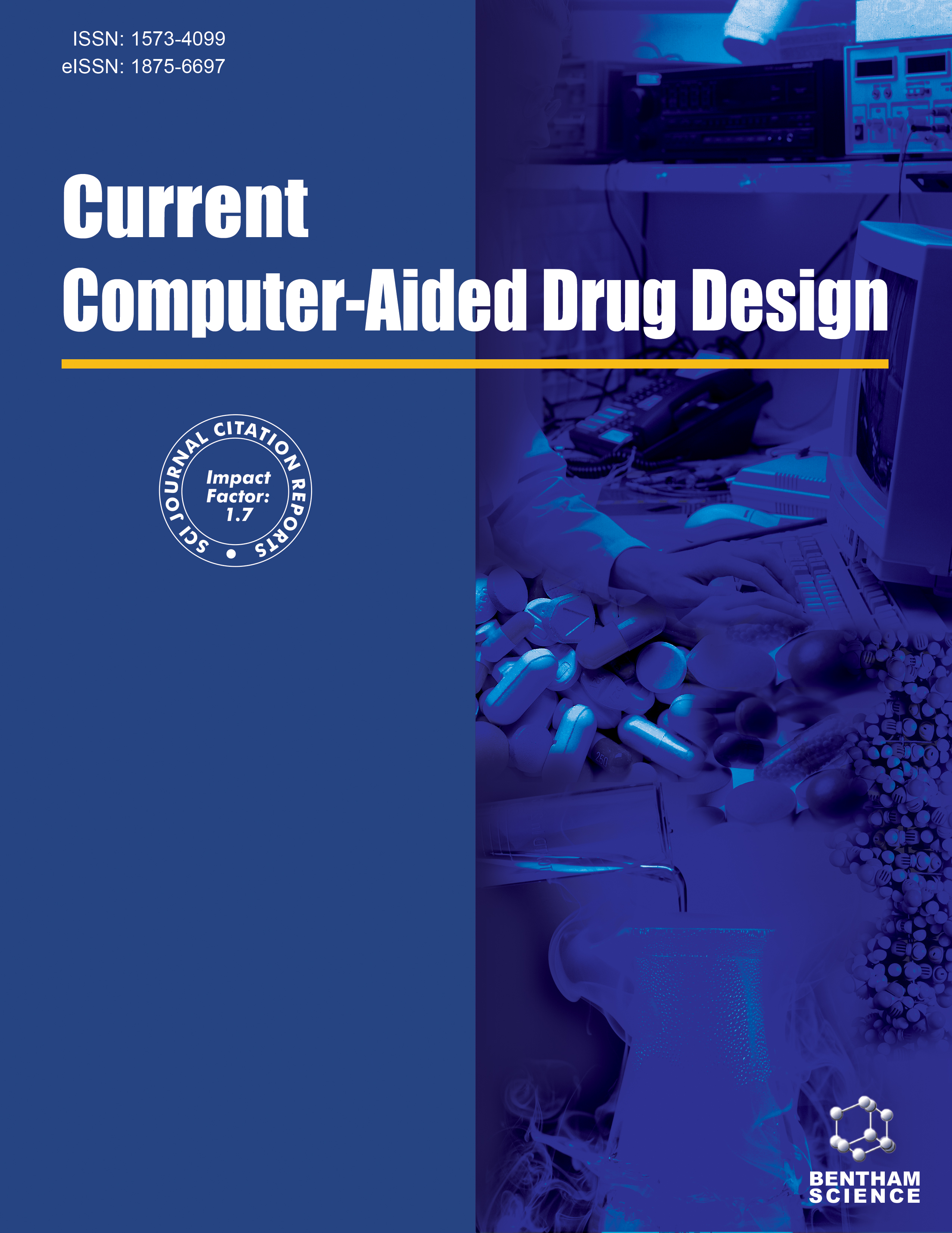- Home
- A-Z Publications
- Current Computer - Aided Drug Design
- Previous Issues
- Volume 12, Issue 4, 2016
Current Computer - Aided Drug Design - Volume 12, Issue 4, 2016
Volume 12, Issue 4, 2016
-
-
Proton Hopping as the Nerve Conduction Message
More LessBackground: The article proposes a new concept explaining nerve conduction information. The conduction is based upon proton hopping, the fastest known chemical reaction. A summary of the proton hopping at several parts of the nerve structure are described. Methods: The details of each part of the nerve system are described in the article. Results: A summary of the parts of the nerve structure involving the role of p Read More
-
-
-
Mathematical Nanotoxicoproteomics: Quantitative Characterization of Effects of Multi-walled Carbon Nanotubes (MWCNT) and TiO2 Nanobelts (TiO2-NB) on Protein Expression Patterns in Human Intestinal Cells
More LessAuthors: Subhash C. Basak, Marjan Vracko and Frank A. WitzmannBackground: Various applications of nanosubstances in industrial and consumer goods sectors are growing rapidly because of their useful chemical and physical properties. Objectives: Assessment of hazard posed by exposure to nanosubstances is essential for the protection of human and ecological health. Methods: We analyzed the proteomics patterns of Caco-2/HT29-MTX cells in co-culture exposed for three and twenty f Read More
-
-
-
5-Year Trends in QSAR and its Machine Learning Methods
More LessAuthors: Oleg T. Devinyak and Roman B. LesykBackground: Quantitative Structure-Activity Relationships (QSAR) is a well-established branch of computational chemistry. The presence of QSAR papers is decreasing for the last few years. Objective: To highlight recent trends of QSAR in general and trends of machine learning methods in particular. Method: A bibliometric analysis of articles published in top ten molecular modeling and medicinal chemistry journals was carri Read More
-
-
-
A Computational Model for Docking of Noncompetitive Neuraminidase Inhibitors and Probing their Binding Interactions with Neuraminidase of Influenza Virus H5N1
More LessBackground: With cases of emergence of drug resistance to the current competitive inhibitors of neuraminidase (NA) such as oseltamivir and zanamavir, there is a present need for an alternative approach in the treatment of avian influenza. With this in view, some flavones and chalcones were designed based on quercetin, the most active naturally occurring noncompetitive inhibitor. Objective: We attempt to understand th Read More
-
-
-
Screening and In Vitro Evaluation of Potential Plasmodium falciparum Leucyl Aminopeptidase Inhibitors
More LessAuthors: Meenakshi Chaudhary, Vineeta Singh, Anup R. Anvikar and Shakti SahiBackground: Plasmodium falciparum leucyl aminopeptidase (PfA-M17) regulates the intracellular pool of amino acids required for the growth and development of parasites. Thus, PfA-M17 is a promising target for anti-malarial drug development. Method: In the present study, structure-based drug design was used to identify novel PfA-M17 inhibitors, which were subsequently validated by in vitro PfA-M17 and human LAP3 enzy Read More
-
-
-
Exploring Intrinsic Dimensionality of Chemical Spaces for Robust QSAR Model Development: A Comparison of Several Statistical Approaches
More LessAuthors: Subhabrata Majumdar and Subhash C. BasakBackground: Computed mathematical descriptors of molecules are used for the prediction of their property/ bioactivity. In the 1970s only a few descriptors could be calculated, currently available software can calculate a large number of descriptors for molecules or biomolecules like DNA/ RNA, proteins. Objective: When p molecular descriptors are calculated for n molecules, the data set can be viewed as n vectors in p dim Read More
-
-
-
Design of Novel Chemotherapeutic Agents Targeting Checkpoint Kinase 1 Using 3D-QSAR Modeling and Molecular Docking Methods
More LessAuthors: Anand Balupuri, Pavithra K. Balasubramanian and Seung J. ChoBackground: Checkpoint kinase 1 (Chk1) has emerged as a potential therapeutic target for design and development of novel anticancer drugs. Objective: Herein, we have performed three-dimensional quantitative structure-activity relationship (3D-QSAR) and molecular docking analyses on a series of diazacarbazoles to design potent Chk1 inhibitors. Methods: 3D-QSAR models were developed using comparative molecular fi Read More
-
Volumes & issues
-
Volume 21 (2025)
-
Volume 20 (2024)
-
Volume 19 (2023)
-
Volume 18 (2022)
-
Volume 17 (2021)
-
Volume 16 (2020)
-
Volume 15 (2019)
-
Volume 14 (2018)
-
Volume 13 (2017)
-
Volume 12 (2016)
-
Volume 11 (2015)
-
Volume 10 (2014)
-
Volume 9 (2013)
-
Volume 8 (2012)
-
Volume 7 (2011)
-
Volume 6 (2010)
-
Volume 5 (2009)
-
Volume 4 (2008)
-
Volume 3 (2007)
-
Volume 2 (2006)
-
Volume 1 (2005)
Most Read This Month
Article
content/journals/cad
Journal
10
5
false
en


